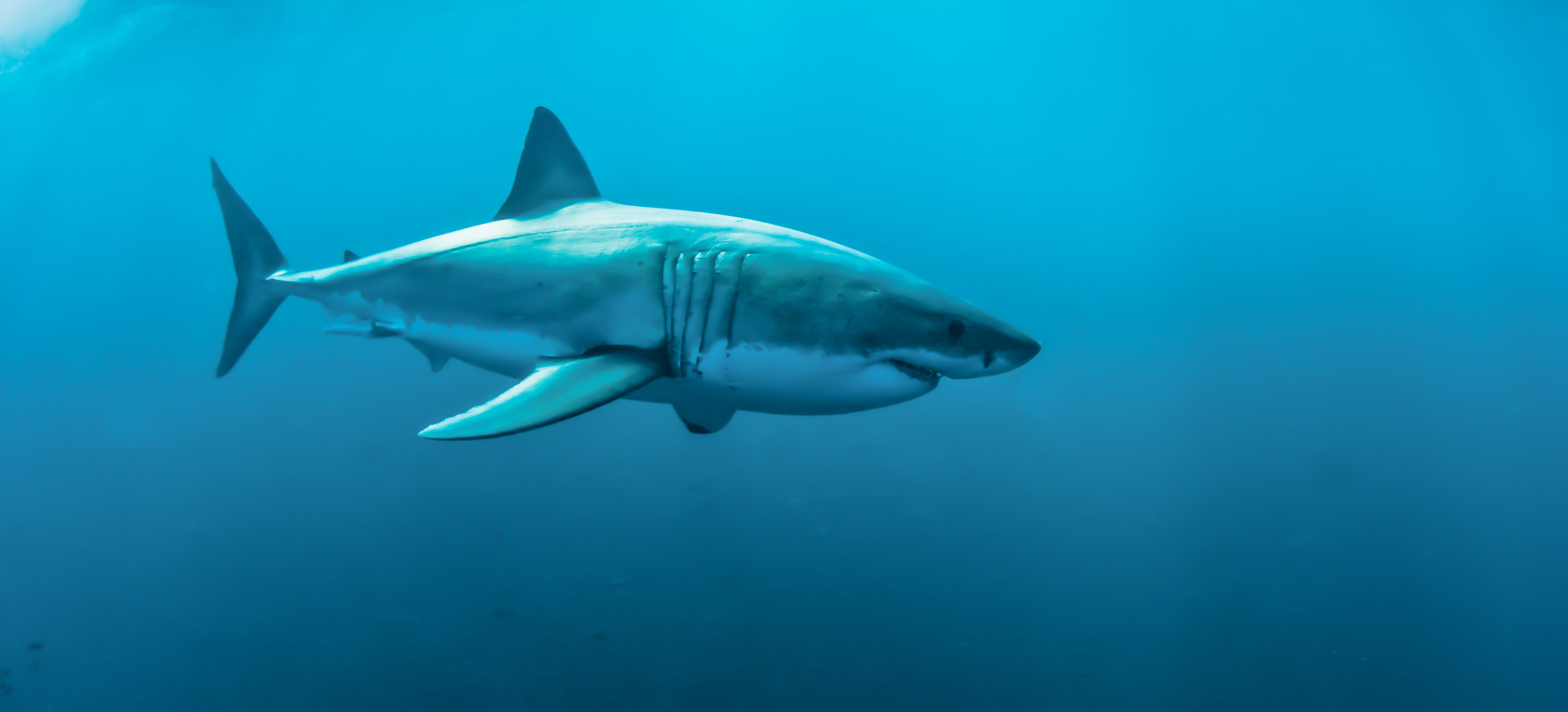
Sharks have roamed our planet’s oceans for more than 400 million years. Because of their size, strength, and toothy jaws, these evolutionary marvels have earned the reputation of ruthless, bloodthirsty predators. But this narrow-minded view of sharks has threatened their future. There’s a lot more to sharks than meets the eye, and with 27 distinct shark species prowling all three of Canada’s oceans, including great whites in the Atlantic, Greenland sharks in the Arctic, and salmon sharks in the Pacific waters off of B.C., they’re a vital part of our diverse oceanic ecosystems.
In Canada, unselective fishing practices, particularly the unintentional capture of sharks in longline fisheries targeting tuna, swordfish and groundfish are a major factor driving shark populations to decline.
Which is why WWF is working to combat the threat of unsustainable bycatch – one of the main global threats to sharks. To learn more about WWF’s work on sharks visit wwf.ca/sharks.
For a quick glimpse at just how incredible these creatures are, here are seven fascinating facts about sharks.
1. They lose tens of thousands of teeth in a lifetime
Sharks continually shed and replace their teeth, losing as many as 30,000 in their lifetime. Luckily, sharks have multiple rows of teeth, though the number of rows varies from species to species. Every time a shark loses a tooth, one in the row behind it moves forward to take its place. It’s able to do this because a shark’s teeth are not embedded in its jaw, but are actually attached to the skin covering it.
2. Their teeth have built-in toothpaste

You’d think that, after chomping on all those seals and fish, a shark’s pearly whites would start to decay. But scientists recently discovered that sharks may have the healthiest teeth in the animal kingdom. Not only do sharks regularly shed their teeth, but the outer coating contains fluoride, the active ingredient in most toothpastes and mouthwashes.
3. Skin on females can be twice as thick as males
Covered with millions of tiny teeth called dermal denticles, shark skin is incredibly tough, especially when it comes to females. In fact, some female sharks have skin twice as thick as their male counterparts. This ensures little damage is done during the mating process, since males must bite the female’s back, flanks and fins to get into the proper mating position. These bites are less vicious than feeding bites, but they can still inflict wounds.
4. They have a sixth sense

Sharks are known to have a super keen sense of sound, smell and sight. But some species also have a sixth sense known as electroreception. This gives them the ability to detect electrical impulses given off by other living organisms, including the heartbeat of hidden or camouflaged fish. That’s why some sharks rely on their electroreceptors, a network of jelly-filled pores located in their head, to find prey.
5. Some females can reproduce independently
Some female sharks are able to give birth without the help of males. This natural form of asexual reproduction, in which the growth and development of an embryo occurs without fertilization, is known as “parthenogenesis,” which stems from the Greek words “virgin” and “creation.” This usually occurs when the egg genome is doubled to generate an embryo with the proper number of chromosomes, and has been documented in multiple shark species.
6. They’re relatively harmless

Although people kill up to 100 million sharks per year, few shark attacks on humans are fatal. Researchers believe that most shark attacks are cases of mistaken identity. Sharks might confuse a human’s thrashing arms or dangling feet for prey, but once they take a bite and realize it’s not a seal or fish, they’ll often let go. And those bites are rarer than Hollywood will have you believe — you’re actually more likely to get struck by lightning than attacked by a shark.
7. There are more than 400 different species worldwide
Based on media coverage and Spielberg’s classic film Jaws, when someone says “shark,” it’s often a great white that comes to mind. But there are actually hundreds of different shark species, ranging from the eight-inch-long dwarf lantern shark to the 12-metre-long whale shark. The waters bordering Canada alone are home to 27 different species, including the Greenland shark and the spiny dogfish.
[geoip-content not_country=”CA”]
Want to see more of nature’s most amazing underwater predators? Sink your teeth into our feast of shark-related shows and documentaries, now streaming on Love Nature. Sign up today and watch on demand right now, with an exclusive 30-day free trial.
ON THE APP
 Predators of a Different Kind—In the World of the Unknown Sharks
Predators of a Different Kind—In the World of the Unknown Sharks
Stare into the giant gaping maw of the basking shark as it suctions up its prey like a vacuum cleaner. Down below, ingeniously camouflaged carpet sharks patiently wait for an unfortunate victim to wander by.
 Wild Sharks
Wild Sharks
Explore the shallow waters and treacherous ocean reefs where some of the deadliest species of shark lie in wait. Watch diving specialists literally stare into the very jaws of death in order to understand the physical and behavioural patterns of these dangerous ocean predators.
 Sixgill Shark: Into the Abyss
Sixgill Shark: Into the Abyss
The sixgill shark is a primitive giant predator, rarely encountered by divers. For Natali Tesche-Ricciardi, finding this elusive shark is the ultimate challenge. Follow her as she dives into the treacherous Messina Strait in search of a mesmerising encounter with this forgotten goliath of the abyss.
[/geoip-content]



